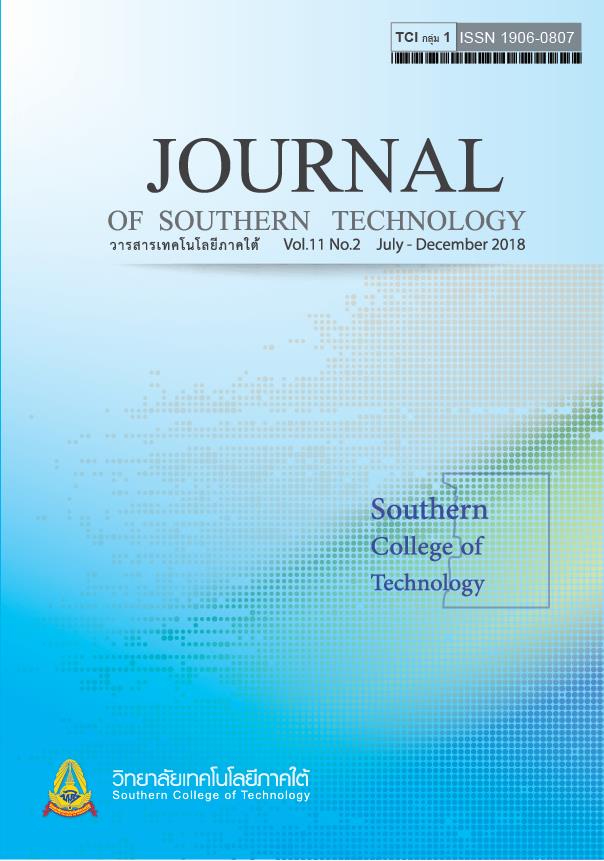Relationships between Personality and Working Happiness of Employees in Higher Educational Institutions in Nakhon Si Thammarat
Main Article Content
Abstract
This research aimed to study (1) employee personality and working happiness, (2) relationships between their personality and happiness, (3) relationships between correlation of five personality factors and working happiness, and (4) a multiple regression equation using personality factors as predictors in predicting working happiness. The sample was 320 employees working in higher Educational institutions in Nakhon Si Thammarat. The research instrument was a 5-step rating scale questionnaire with reliability coefficient of .855 to .967. Statistical analysis was performed to obtain percentage, mean, standard deviation, Pearson’s correlation coefficient, multiple correlation coefficients and a multiple regression equation using entry method. Results revealed that (1) the overall happiness of the employee was reported to be at a moderate level, (2) Neuroticism, extraversion, openness to experience and agreeableness had low relationship with working happiness (r = .151 to r = .363), while the conscientiousness had no relationship with working happiness. (3) The relationship between the combination five personalities and working happiness was significant (R = .501), and (4) the combination of the five personalities could predict the working happiness by raw score or standard score regression equation.
Article Details
-
Authors must agree to the journal publication rules and allow the editors to edit the manuscripts for publication.
-
Author’s right belongs to the author but Journal of Southern Technology holds the right of first publication and thus allow readers to use the article for the purpose of education but not commercial.
References
Chaisorn, A. (2013). The Relationship between personality, organizational climate, organizational commitment and organizational citizenship behaviors of private vocational school teachers in Nakhon Si Thammarat. Journal of Southern Technology, 6(1), 59-66. [in Thai]
Costa, P. T., & McCrae, R. R. (1992). The NEO-PI Personality Inventory. Odessa, FL: Psychological Assessment Resources.
Gavin, J. H., & Mason, R. O. (2004). The Virtuous Organization: The Value of Happiness in the Workplace. Organization Dynamics.
Herzberg, F. B., & Synderman, B. B. (1959). The Motivation to Work. New York: John Wiley and Sons.
Kantha, R. (2011). The Relationship Between the Five-Factor Model of Personality and Team Work: Case study of Mae Sai Customer House. M.P.A. Thesis (Public and Private Management), Mae Fah Luang University. [in Thai]
Manion, J. (2003). Joy at Work: As Experienced, As Expressed. Ph.D. Dissertation (Human and Organizational Systems), University of Michigan.
Madphol, P. (2011). Study of Workplace Happiness Level In the View of Employees A Case Study of Thai Plastic Bags Industry, Sam Phran District, Nakhon Pathom. M.A. Thesis (Human and Community Resource Development), Kasetsart University. [in Thai]
Phuaphan, P., Chumnansook, P., & Chuenwatthana, P. (2013). The relationship between personality, happiness at workplace and performance appraisal: A case study of manufacturing and export kitchenware company. Journal of Education faculty of Humanities and Social Sciences, Mahasarakham University, 32(2), 102-112. [in Thai]
Wijarean, N., Aekakulanan, S., & Samudtanon, T. (2011). Factors effecting happiness in working of assembly line employees in Utac Thai Co., Ltd. (The Headquarter). Journal of Education Faculty of Education, Prince of Songkla University, Pattani Campus, 22(2), 273-288. [in Thai]

